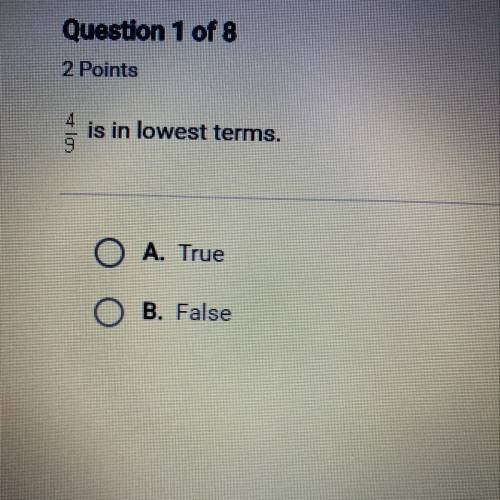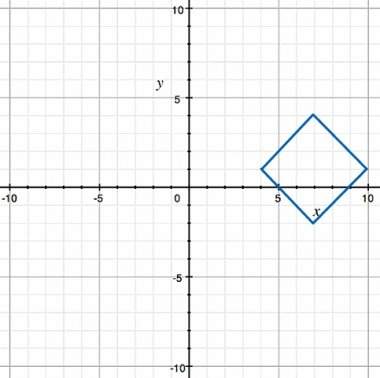4/9 is in lowest terms.
A. True
B. False
...

Mathematics, 22.03.2020 22:55 preguntassimples
4/9 is in lowest terms.
A. True
B. False


Answers: 2


Other questions on the subject: Mathematics

Mathematics, 21.06.2019 14:50, fdasbiad
Simplify 5 square root of 7 end root plus 12 square root of 6 end root minus 10 square root of 7 end root minus 5 square root of 6 . (1 point) 5 square root of 14 end root minus 7 square root of 12 5 square root of 7 end root minus 7 square root of 6 7 square root of 12 end root minus 5 square root of 14 7 square root of 6 end root minus 5 square root of 7
Answers: 2


Mathematics, 21.06.2019 21:00, vliu470
Even if a person is in very good shape, applying to be a police officer requires commitment to fitness. applicants must pass a physical fitness test. in order to prepare for the test, janet purchases an activity tracker to court her steps. her goal is to walk 10,000 steps each day. she measures heard average step length to be 30 inches. play janet runs, her average steps length increases to 36 in. how many steps would she have to take to run 1 mile 50280 round to the nearest step
Answers: 3

Mathematics, 21.06.2019 21:30, gonzalezashley152
In a test for esp (extrasensory perception), the experimenter looks at cards that are hidden from the subject. each card contains either a star, a circle, a wave, a cross or a square.(five shapes) as the experimenter looks at each of 20 cards in turn, the subject names the shape on the card. when the esp study described above discovers a subject whose performance appears to be better than guessing, the study continues at greater length. the experimenter looks at many cards bearing one of five shapes (star, square, circle, wave, and cross) in an order determined by random numbers. the subject cannot see the experimenter as he looks at each card in turn, in order to avoid any possible nonverbal clues. the answers of a subject who does not have esp should be independent observations, each with probability 1/5 of success. we record 1000 attempts. which of the following assumptions must be met in order to solve this problem? it's reasonable to assume normality 0.8(1000), 0.2(1000)%30 approximately normal 0.8(1000), 0.2(1000)% 10 approximately normal srs it is reasonable to assume the total number of cards is over 10,000 it is reasonable to assume the total number of cards is over 1000
Answers: 1
You know the right answer?
Questions in other subjects:

Mathematics, 08.02.2022 02:50



History, 08.02.2022 02:50


English, 08.02.2022 02:50

Mathematics, 08.02.2022 02:50







